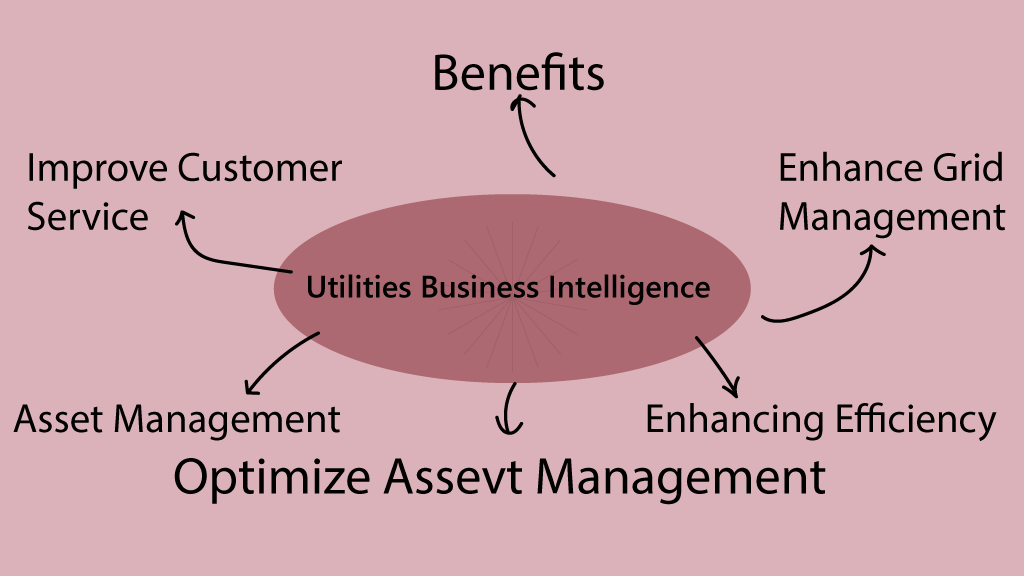In today’s rapidly evolving landscape of utility management, leveraging data effectively can make all the difference between operational efficiency and costly inefficiencies. The concept of utilities business intelligence (BI) is at the forefront of this transformation, empowering utility companies with actionable insights derived from comprehensive data analysis. This article explores the significance of utilities BI, its applications in asset management, and the benefits it brings to the table.
- Understanding Utilities Business Intelligence
- Benefits of Real-Time Business Intelligence in Utilities
- Asset Management for Utilities: Leveraging Technology
- Utility Analytics Conference: Driving Innovation and Collaboration
- Utility Magazines: Staying Informed in a Dynamic Industry
- FAQs About Utilities Business Intelligence
- Conclusion
Understanding Utilities Business Intelligence
Utilities business intelligence, also known as utility analytics, is the process of gathering and analyzing data from various sources within a utility company to make informed business decisions. This includes data from smart meters, operational systems, customer interactions, and more. The goal is to extract meaningful insights that can optimize operations, improve customer service, and enhance overall efficiency.
Utility companies are increasingly turning to BI tools and platforms to streamline their operations and stay competitive in a rapidly changing market. These tools allow them to:
- Visualize data trends
- Predict equipment failures
- Optimize energy distribution
- Personalize customer interactions based on usage patterns
Case Study: SmartGrid Co.
SmartGrid Co., a mid-sized utility company, implemented a BI solution in 2022. Within a year, they reduced outage response times by 30% and improved customer satisfaction scores by 25%, demonstrating the tangible benefits of BI in the utility sector.
Benefits of Real-Time Business Intelligence in Utilities
Real-time business intelligence is particularly valuable in the utilities sector, where decisions often need to be made swiftly to respond to changing conditions and customer demands. By capturing and analyzing data in real-time, utility companies can:
Enhance Grid Management
- Quickly identify and respond to outages
- Manage peak demand periods effectively
- Address potential grid issues proactively
Improve Customer Service
- Provide timely information to customers about their usage patterns
- Resolve billing inquiries more efficiently
- Communicate service disruptions and restoration times accurately
Optimize Asset Management
- Predict maintenance needs using predictive analytics
- Extend the life of critical assets through timely interventions
- Allocate resources more efficiently based on asset health and criticality
Asset Management for Utilities: Leveraging Technology
Asset management plays a crucial role in ensuring the reliability and longevity of infrastructure within utility companies. Traditionally, asset management relied on scheduled maintenance and reactive responses to failures. However, with the advent of utility asset management software, companies can now adopt proactive strategies driven by data analytics.
Utility asset management software consolidates data from various sources, including IoT sensors and maintenance logs, to provide a holistic view of asset health. This enables utilities to prioritize maintenance tasks based on asset criticality and condition, reducing downtime and operational costs.
Integration of AI and Machine Learning
The latest trend in utilities BI is the integration of artificial intelligence (AI) and machine learning (ML) algorithms. These technologies enable:
- More accurate predictive maintenance models
- Automated anomaly detection in grid operations
- Personalized energy-saving recommendations for customers
Utility Analytics Conference: Driving Innovation and Collaboration
The Utility Analytics Conference serves as a pivotal platform for industry professionals to discuss emerging trends, innovative technologies, and best practices in utility analytics and business intelligence. This annual event gathers experts and thought leaders to share insights on topics such as:
- Predictive analytics for asset management
- Cybersecurity in the age of smart grids
- Integration of renewable energy sources into existing systems
- Best practices for data governance and privacy
Utility Magazines: Staying Informed in a Dynamic Industry
Utility magazines play a vital role in keeping industry professionals informed about the latest developments, regulations, and technological advancements. These publications cover a wide range of topics, including:
- Utility management strategies
- Case studies of successful BI implementations
- Interviews with industry leaders
- Regulatory updates and their impact on operations
Subscribing to utility magazines is an excellent way for professionals to stay ahead in a rapidly evolving industry landscape.
FAQs About Utilities Business Intelligence
Q: What is the difference between utilities analytics and utilities business intelligence? A: While often used interchangeably, utilities analytics generally refers to the process of analyzing data, while utilities business intelligence encompasses the broader strategy of using data-driven insights to improve business operations.
Q: How does utilities BI integrate with existing systems? A: Utilities BI solutions typically use APIs and data connectors to integrate with existing operational systems, SCADA networks, and customer databases. This allows for seamless data flow and real-time analysis.
Q: What are the key challenges in implementing a BI solution for utilities? A: Common challenges include data quality issues, integration with legacy systems, ensuring cybersecurity, and training staff to effectively use BI tools.
Q: How can small utility companies benefit from BI? A: Small utilities can start with focused BI initiatives, such as improving billing accuracy or optimizing maintenance schedules, to see immediate benefits without large-scale investments.
Q: What role does big data play in utilities BI? A: Big data technologies enable utilities to process vast amounts of data from smart meters, weather systems, and other sources, providing more comprehensive and accurate insights.
Q: How is BI helping utilities transition to renewable energy sources? A: BI tools help utilities forecast renewable energy generation, manage grid stability with variable sources, and optimize the integration of distributed energy resources.
Conclusion
Utilities business intelligence is reshaping the way utility companies operate by harnessing the power of data to drive efficiency, improve customer service, and optimize asset management. As technology continues to advance and data becomes more abundant, the role of BI in utilities will only become more critical.
By embracing these innovations and leveraging insights from utility analytics, companies can navigate challenges more effectively and pave the way for a sustainable and resilient future. Utilities BI is not just a tool for optimizing operations but a catalyst for innovation and growth in the utilities sector. By integrating BI into their core strategies, utility companies can position themselves as leaders in an increasingly competitive market while delivering greater value to their customers and stakeholders.




